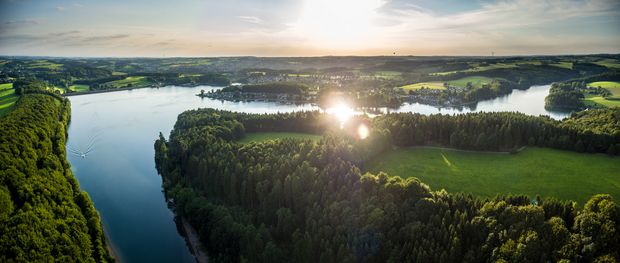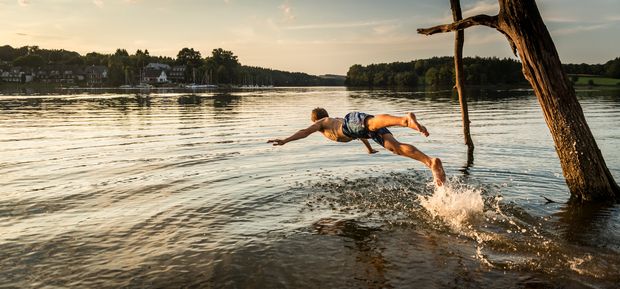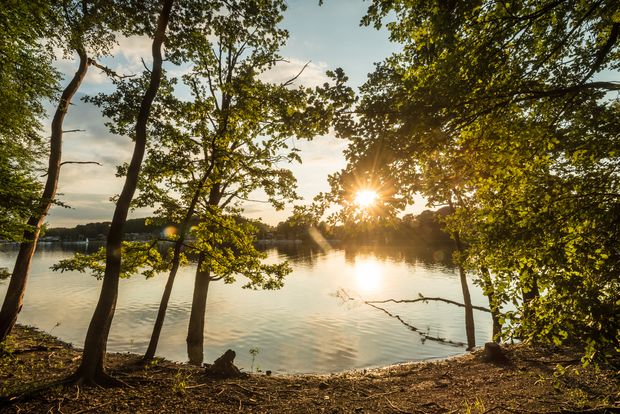The Water Quintet
Where the Wipper becomes the Wupper
The Water Quintet refers to the region around the five dams: the Wupper, Bever, Brucher, Neye and Lingese. They give the Bergisches Land a unique character and are pivotal to the development of the cultural landscape. Explore the varied landscape around the five dams in the Oberberg region along a number of circular routes of varying lengths: the vast "Water Quintet Hiking Trail" is 108km long and connects all four districts of the Water Quintet. What's more, visitors of all ages can enjoy a short or long hike through the varied landscape on a total of 11 circular trails. There is also the Water Quintet Cycle Route, which invites you to discover the Water Quintet along 73km of signposted cycle paths, 28 km of which are former railway tracks.
Discover the Water Quintet in the Bergisches Land in the midst of a fascinating natural landscape along the Wupper river and its numerous dams.



